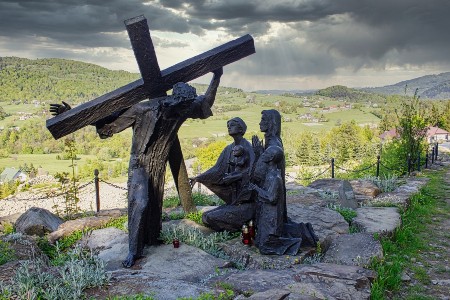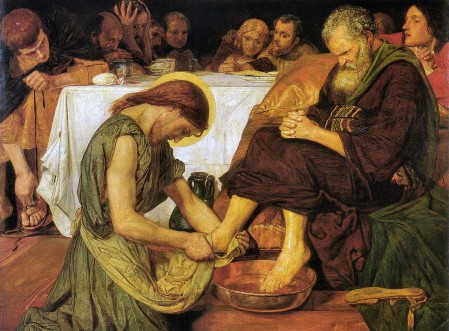We ask you, urgently: don’t scroll past this
Dear readers, Catholic Online was de-platformed by Shopify for our pro-life beliefs. They shut down our Catholic Online, Catholic Online School, Prayer Candles, and Catholic Online Learning Resources—essential faith tools serving over 1.4 million students and millions of families worldwide. Our founders, now in their 70's, just gave their entire life savings to protect this mission. But fewer than 2% of readers donate. If everyone gave just $5, the cost of a coffee, we could rebuild stronger and keep Catholic education free for all. Stand with us in faith. Thank you.Help Now >
Euthalius
FREE Catholic Classes
( )
A deacon of Alexandria and later Bishop of Sulca. He lived towards the middle of the fifth century and is chiefly known through his work on the New Testament in particular as the author of the "Euthalian Sections". It is well known that the divisions into chapters and verses with which we are familiar were entirely wanting in the original and early copies of the New-Testament writings; there was even no perceptible space between words. To obviate the manifest inconveniences arising from this condition of the text, Ammonius of Alexandria, in the third century, conceived the idea of dividing the Four Gospels into sections varying in size according to the substance of the narrative embodied in them, and Euthalius, following up the same idea, extended a similar system of division to the other books of the New Testament with the exception of the Apocalypse. So obvious were the advantages of the scheme that it was soon adopted throughout the Greek Church. As divisions of the text these sections have no longer any intrinsic value. But as they were at a given period adopted in nearly all the Churches, and noted by the copyists, they are valuable as chronological indications, their presence or absence being an important circumstance in determining the antiquity of a manuscript.
Other labours of Euthalius in connexion with the text of the New Testament refer to the larger sections or lessons to be read in the liturgical services, and to the more minute divisions of the text called , or verses. The custom of reading portions of the New Testament in the public liturgical services was already ancient in the Church, but with regard to the choice and delimitation of the passages there was little or no uniformity, the Churches having, for the most part, each its own series of selections. Euthalius elaborated a scheme of divisions which was soon universally adopted. Neither the Gospels nor the Apocalypse enter into this series, but the other portions of the New Testament are divided into 57 sections of varying length, 53 of which are assigned to the Sundays of the year, while the remaining four refer probably to Christmas, the Epiphany, Good Friday , and Easter.
The idea of dividing the Scriptures into , or verses, did not originate with Euthalius. It had already been applied to portions of the Old Testament, especially to the poetical parts, and even to some parts of the New. Here, as with regard to the other divisions, Euthalius only carried out systematically and completed a scheme which had been but partially and imperfectly realized by others, and his work marks a stage of that progress which led finally to punctuation of the text. These were of unequal length, either containing a few words forming a complete sense, or as many as could be conveniently uttered with one breath. Thus, for instance, the Epistle to the Romans contained 920 of these verses; Galatians, 293; Hebrews, 703; Philemon, 37, and so on.
Besides these textual labours Euthalius framed a catalogue of the quotations from the Old Testament and from profane authors which are found in the New- Testament writings. He also wrote a short "Life of St. Paul" and a series of "Argumenta" or short summaries which are placed by way of introduction to the different books of the New Testament. Of Euthalius' activities as a bishop little or nothing is known. Even the location of his episcopal see, Sulca, is a matter of doubt. It can hardly be identified with the bishopric of that name in Sardinia. More likely it was situated somewhere in Egypt, and it has been conjectured that it is the same as Psilka, a city of the Thebaid in the neighbourhood of Syene.
After having long lain in oblivion, the works of Euthalius were published in Rome, in 1698, by Lorenzo Alessandro Zaccagni, Prefect of the Vatican Library. They are embodied in the first volume of his "Collectanea Monumentorum Veterum Ecclesiæ Græcæ ac Latinæ." They can also be found in Gallanci (Biblioth. Pat., X, 197) and in Migne (P. G., LXXXV, 621).
Join the Movement
When you sign up below, you don't just join an email list - you're joining an entire movement for Free world class Catholic education.
-

-
Mysteries of the Rosary
-
St. Faustina Kowalska
-
Litany of the Blessed Virgin Mary
-
Saint of the Day for Wednesday, Oct 4th, 2023
-
Popular Saints
-
St. Francis of Assisi
-
Bible
-
Female / Women Saints
-
7 Morning Prayers you need to get your day started with God
-
Litany of the Blessed Virgin Mary
Daily Catholic
 Daily Readings for Thursday, November 21, 2024
Daily Readings for Thursday, November 21, 2024 St. Gelasius: Saint of the Day for Thursday, November 21, 2024
St. Gelasius: Saint of the Day for Thursday, November 21, 2024 Act of Consecration to the Holy Spirit: Prayer of the Day for Thursday, November 21, 2024
Act of Consecration to the Holy Spirit: Prayer of the Day for Thursday, November 21, 2024- Daily Readings for Wednesday, November 20, 2024
- St. Edmund Rich: Saint of the Day for Wednesday, November 20, 2024
- Act of Adoration: Prayer of the Day for Wednesday, November 20, 2024
![]()
Copyright 2024 Catholic Online. All materials contained on this site, whether written, audible or visual are the exclusive property of Catholic Online and are protected under U.S. and International copyright laws, © Copyright 2024 Catholic Online. Any unauthorized use, without prior written consent of Catholic Online is strictly forbidden and prohibited.
Catholic Online is a Project of Your Catholic Voice Foundation, a Not-for-Profit Corporation. Your Catholic Voice Foundation has been granted a recognition of tax exemption under Section 501(c)(3) of the Internal Revenue Code. Federal Tax Identification Number: 81-0596847. Your gift is tax-deductible as allowed by law.







 Daily Readings for Thursday, November 21, 2024
Daily Readings for Thursday, November 21, 2024 St. Gelasius: Saint of the Day for Thursday, November 21, 2024
St. Gelasius: Saint of the Day for Thursday, November 21, 2024 Act of Consecration to the Holy Spirit: Prayer of the Day for Thursday, November 21, 2024
Act of Consecration to the Holy Spirit: Prayer of the Day for Thursday, November 21, 2024


